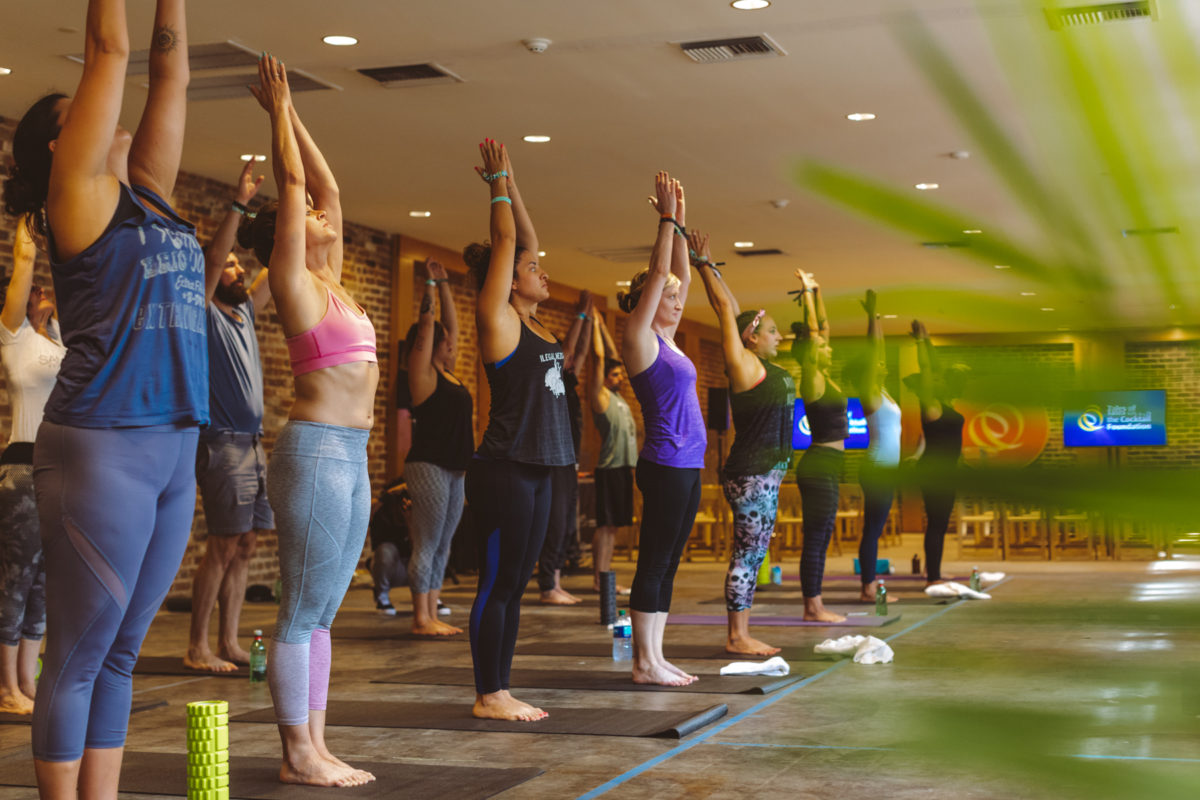If you’ve spent enough time behind the stick, then you know that bartending can be rough on the body. Cuts, repetitive stress injuries, back injuries, sleepless nights, and burns are all accepted as part of the job. But to try to prevent injury, many bartenders are turning to exercise.
For some, yoga is the answer. Physically, different types of yoga can help the body relax, increase mobility, or rehab or prevent injuries, says Alex DuBois, former bartender and owner of Mission Yoga & Movement in Scranton, PA.
Restorative sequences can help shake off the effects of a busy shift, while dynamic practices can increase mobility and the potential for staying healthy, DuBois says. Static postures, on the other hand, can help with rehab and engage the mental aspect of yoga.
Dushan Zaric, owner of Employees Only and partner in The 86 Co., started practicing yoga to find answers. “In my 20s, I started noticing that I was not a happy bartender,” he says. “I wanted to be able to embrace my reality and not fight it every day. I came to it not because I was looking for benefits in my bartending career, but then I realized that it’s super beneficial for this career.”
Though the physical aspects of yoga are important, its effects are farther reaching. “Bartending is a craft, and as a craft, one of the things you need to ensure is that you’re in a physical, intellectual and emotional place where you can pass it along,” says Zaric. “[Yoga] brings you into a relationship, into a balance between physical, mental, and emotional intelligence. Not a lot of people speak about that.”
“When you’re sitting still and having to confront yourself in some way, it can create a satisfaction that tends to affect the way you look at the day,” says DuBois. “For some reason, you find yourself more able to handle the demands of large crowds or customer service.”
To get the best results, set a routine of a few postures and maybe some restorative work. After a shift, go through the routine to wind down and head towards bed, says DuBois. “That way, you’re not up for three or four hours after every night.” In addition to your routine, think about attending a couple classes every week, he says. “Though they’re all called yoga, they can have some very different effects.” Below, a few suggestions to try at-home:
Preparing for your shift:
“Physically preparing for work should be energizing,” says DuBois. He recommends the following sequences to get the juices flowing:
1. Sun salutations A & B
Sun salutations are often used as a warm up sequence in yoga classes. They’re commonly suggested as a way to energize the body and to get the blood flowing. Start by going through the flow twice, and add repetitions as you’re able.
2. Ashtanga standing sequence
Standing poses are believed to help build energy in the body to promote strength, balance, and focus.
3. Meditation
To prepare mentally, meditation is a must, DuBois says. “It helps keep the funk away!” If you’re new to meditation, he recommends starting with this helpful intro to zazen, the seated meditation practiced by Zen Buddhists.
Unwinding after a shift:
DuBois recommends moving through this sequence, holding each pose for 5-10 minutes.
- Restorative reclining bound angle pose
- Restorative wide angle seated forward bend
- Supported belly down twist
- Legs up the wall
Finally, for a bit of rehab, try a squat sequence. “Squatting addresses a tremendous amount of the immobility and lower back pain that comes from being on your feet,” says DuBois. To start squatting, check out this YouTube video from movement teacher Ido Portal.





